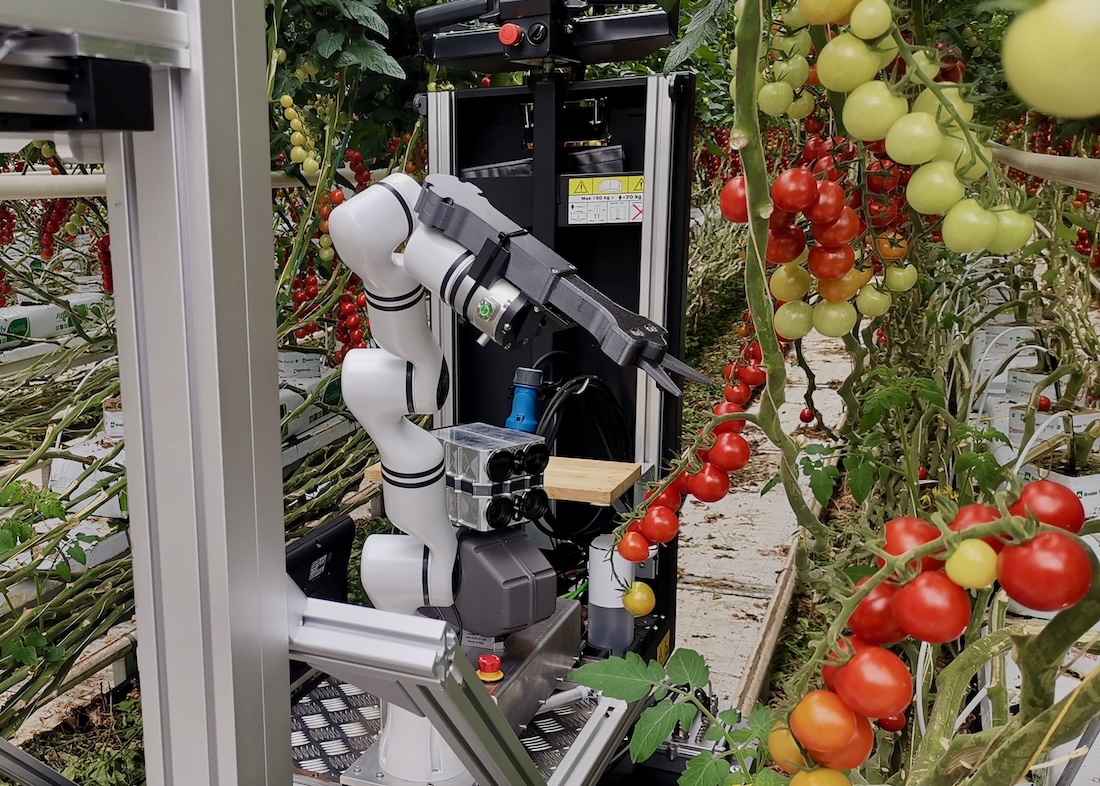Tokyo (SCCIJ) – The Swiss start-up Floating Robotics has developed a picking robot for greenhouses. The device takes on particularly repetitive tasks, thereby alleviating the strain on human pickers.

A Swiss high-tech “worker” picks autonomously tomatoes in a greenhouse (© Floating Robotics).
Productive pilot phase
The work in the tomato greenhouse at Beerstecher AG in Hinwil is demanding. With humidity levels of 80 percent and temperatures of up to 35 degrees Celsius, those working in it very soon find themselves exhausted. The family business in Hinwil is consequently faced with a challenge when finding and retaining suitable labor for its vegetable harvests.
The picking robot from Floating Robotics, a Swiss Federal Institute of Technology Zurich (ETHZ) spin-off, addresses these challenges. It automates crucial tasks such as defoliating, harvesting, and boxing vegetables. Although the robot is still in the pilot phase, it probably will play a permanent role in Beerstecher AG’s production process.
“The robot primarily takes over strenuous and repetitive activities, allowing our employees to focus on more demanding tasks that require a creative and critical mindset,” explains Bianca Curcio, who is responsible for production management in the Beerstecher greenhouse and is an ETH Zurich alumna.
Faster picking
The robot was developed by engineers and students from the Robotic Systems Lab at ETH Zurich. Under the leadership of Salman Faraji, they established Floating Robotics in 2023 to bring the technology behind the picking robot to the market.
Equipped with an integrated camera, the robot monitors the crops, and with the assistance of its built-in computer can recognize different plants and objects. Its robotic arm is activated to perform specific tasks, such as de-leafing or harvesting. The robot developer states that their solution has a three times faster picking speed and two times higher success rate.
The machine can detect thin peduncles and cut the junction directly. Cherries are not touched to avoid bruising the skin and the spread of diseases. The robot directly places the truss in a crate or shells. It spends 10 seconds per truss with a generic all-crop cutting tool. The one specialized for tomato cherries will be faster down to 8 seconds. Trusses may fall apart going faster than this.
With a normal RGB camera, the robot can classify objects in the scene. The start-up uses deep learning extensively to handle very complex backgrounds in outdoor environments. Robustness to fruit variety, lighting conditions, sun direction, and camera location are other challenges that were solved. Also, the software can estimate stem thickness and ensure the cutting tool in the picker will not go for the main tomato trunk.
Working close to the ceiling of a greenhouse is the hardest as there is no shade. Thousands of hooks need to be rotated many times during the season to allow for continuous plant growth. With a custom-made hook, the robot can lower the plants and move them forward with the same tool used for the other farming tasks.
Text: SCCIJ with material of ETHZ and Floating Robotics





























